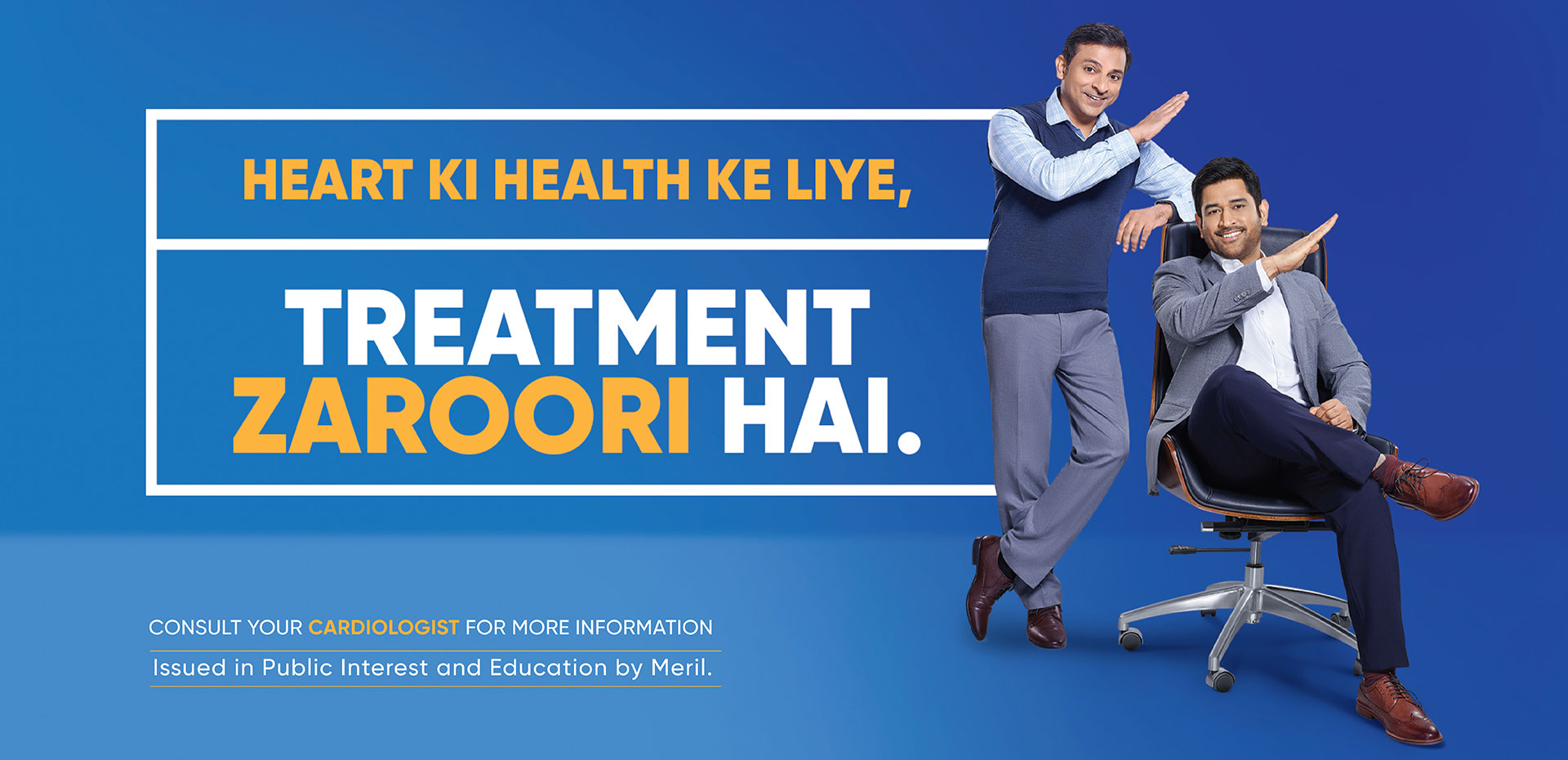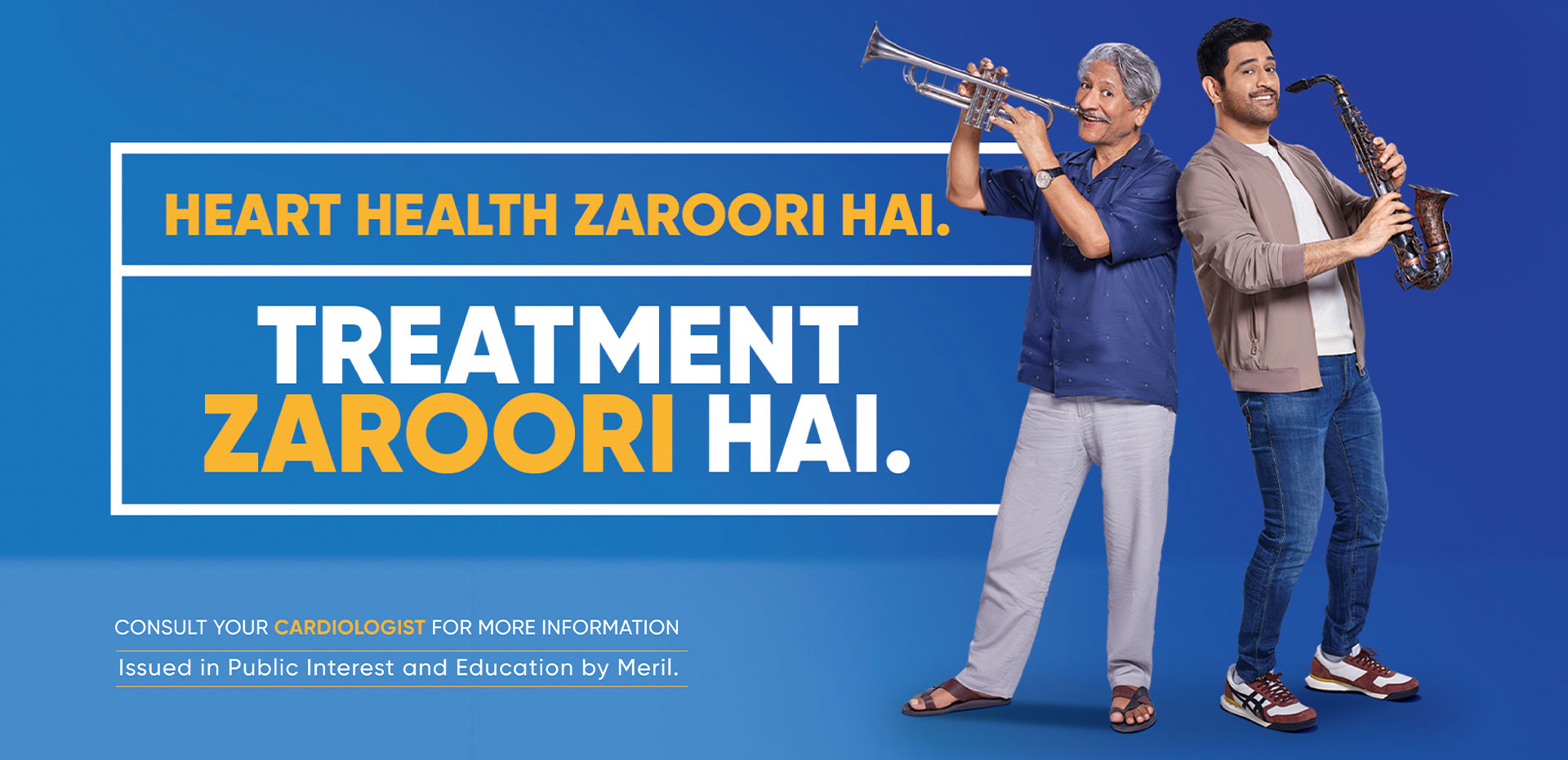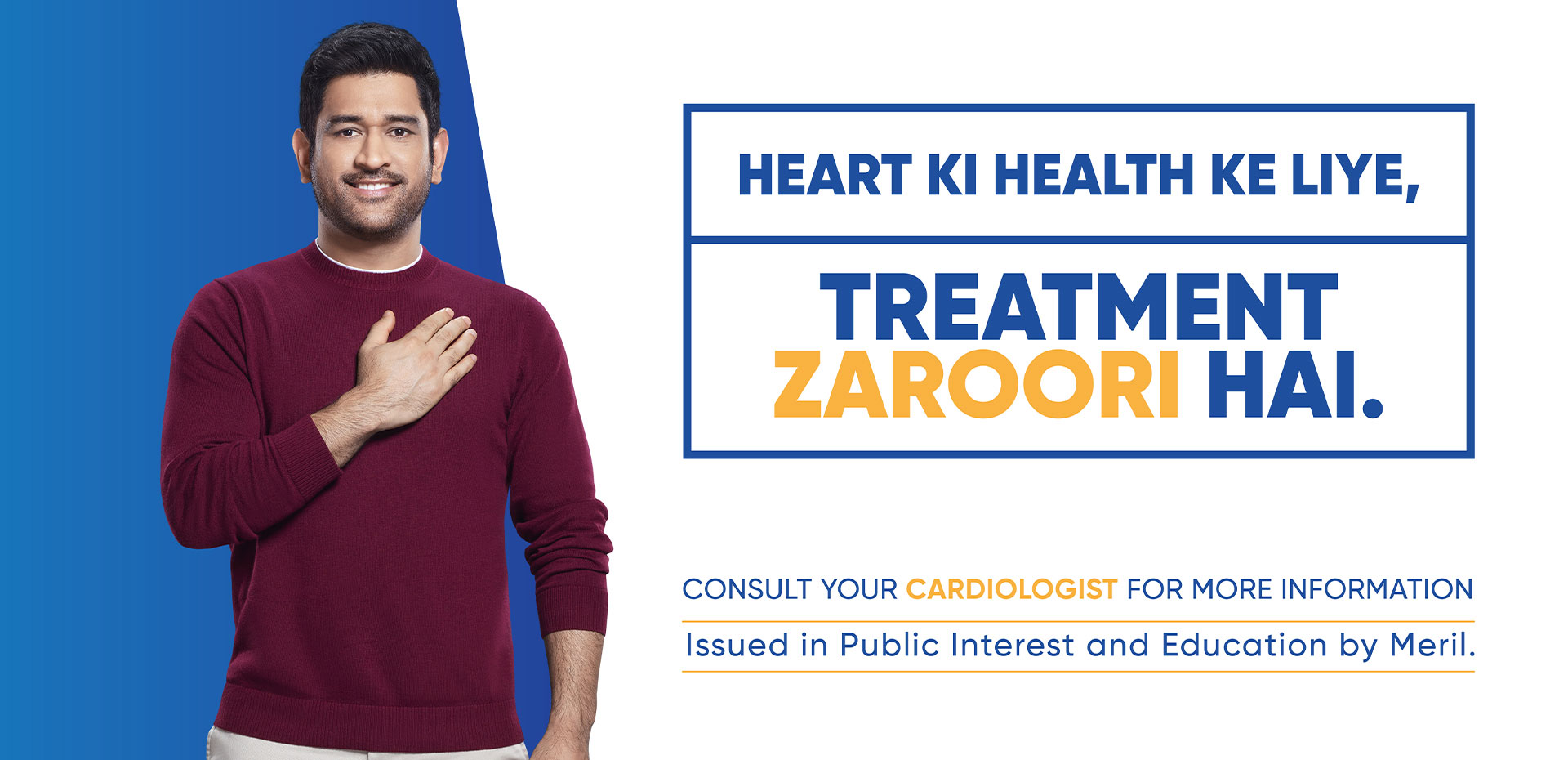Coronary Artery Disease
Coronary Artery Disease (CAD) is the most frequently occurring heart disease.1 It is caused by an underlying condition called atherosclerosis in which plaque buildup (a combination of cholesterol, fat, and other substances) causes narrowing of coronary arteries that supply the heart with blood and oxygen. Without enough oxygen, the heart starts dysfunctioning, leading to various conditions like arrhythmia and angina pectoris. Sometimes the plaque grows so large that it stops blood flow to the heart muscle causing a heart attack.2
Symptoms of CAD2
- Pressure, squeezing pain or tightening in the chest (Angina)
- Difficulty in breathing
- Unusual tiredness
- Crushing chest pain spreading to the shoulder and left arm
- Neck and jaw pain
Treatment of CAD2,3
- Opting for a healthy lifestyle by regularly exercising, eating healthy foods and weight management
- Medications
- Interventional Procedures :
- Angioplasty and Stent or Scaffold Implantation : In this procedure, a small tube (catheter) with a balloon at its tip, is inserted in the blocked artery and the block is cleared off by rapid inflation-deflation of the balloon, restoring the blood flow. In most of such patients, a metallic stent or absorbable scaffold is placed inside the artery to keep it open.
- Coronary Artery Bypass Grafting or Bypass Surgery : A portion of an alternate blood vessel is removed and then it is re-attached to the blocked blood vessel by bypassing the clot portion. It leads to re-routing of the normal blood flow where the blood was not reaching due to the clogged artery.
Bioresorbable Vascular Scaffolds (BVS) :
Bioresorbable Vascular Scaffold (BVS) is a non metallic mesh tube that is used to treat a narrowed artery, is similar to a stent, but slowly dissolves once the blocked artery can function naturally again and stays open on its own. BVS are designed to provide mechanical support and drug delivery similar to the drug eluting stents (DES), followed by complete resorption over several years. BVS also use antirestenotic drugs identical to the second-generation DES, and then resorb early enough to reap the clinical benefits of not leaving a metal device within the artery.4
Advantages of BVS4 :
- Provides stent scaffolding and radial strength properties as long as needed to ensure an open lumen- same as permanent metallic stent
- Completely absorbed leaving no stent behind long-term, thereby removing potential reason of inflammation that may be responsible for late stent thrombosis or restenosis
- Potentially, no need for prolonged anti-platelet therapy
- The dissolving device also preserves all options of future re-interventions
- MRI/CT compatibility (allows non-invasive follow ups)
References :
- Roth GA, Mensah GA, Johnson CO, Addolorato G, Ammirati E, Baddour LM, et al. Global Burden of Cardiovascular Diseases and Risk Factors, 1990-2019: Update From the GBD 2019 Study. J Am Coll Cardiol. 2020 Dec 22;76(25):2982-3021.
- Shahjehan RD, Bhutta BS. Coronary Artery Disease. StatPearls [Internet]. Treasure Island (FL): StatPearls Publishing; 2022 Jan.
- Cassar A, Holmes DR Jr, Rihal CS, Gersh BJ. Chronic coronary artery disease: diagnosis and management. Mayo Clin Proc. 2009;84(12):1130-1146. doi:10.4065/mcp.2009.0391.
Yang X, Ahmed M, Cutlip DE. When to use bioresorbable vascular scaffolds. US Cardiology Review. 2017;11:25-30. DOI: 10.15420/usc.2017:3:2.



